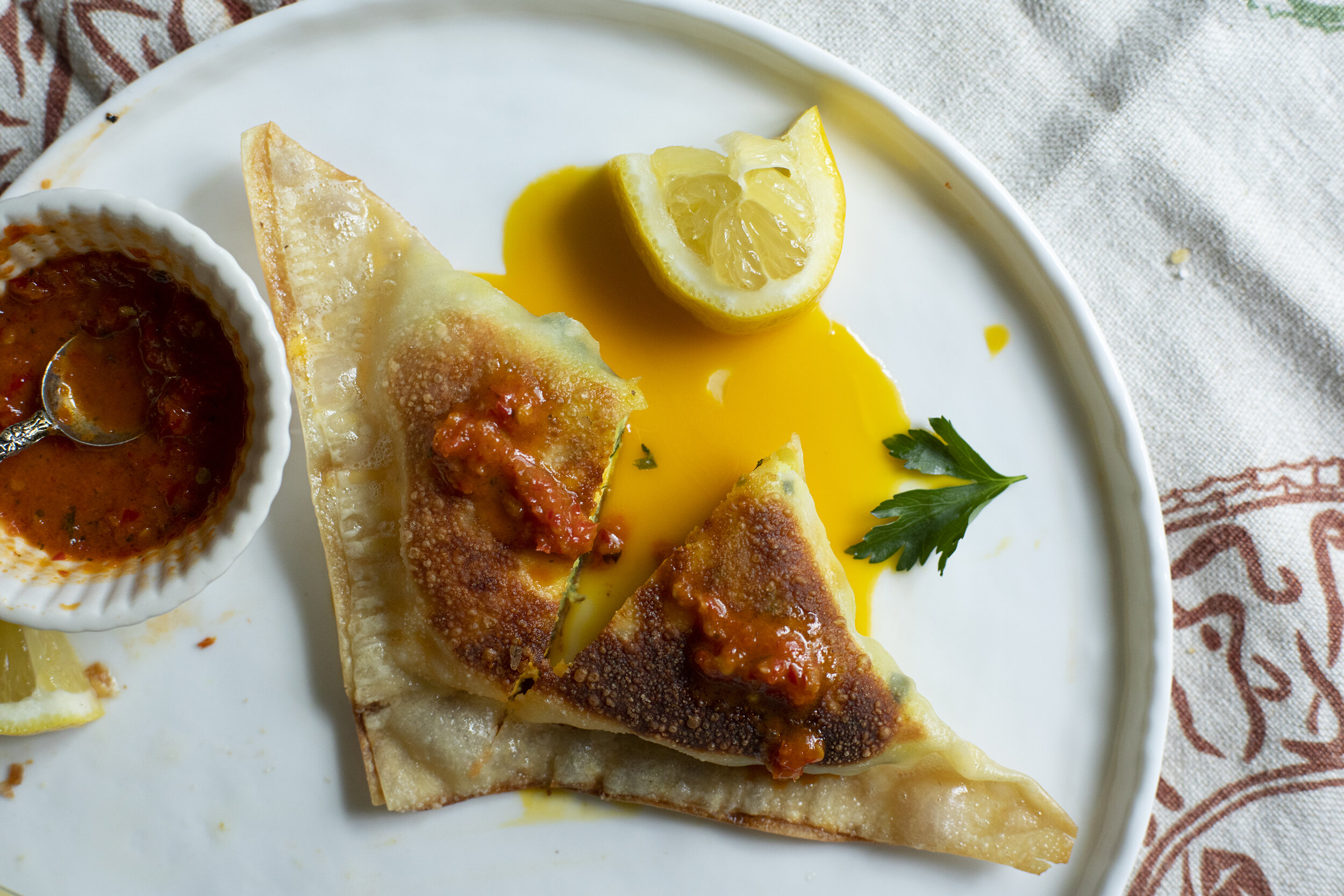Brik with Wild Spring Greens & Morel Mushrooms
Brik is a popular north African street food with many different regional variations. The version I’ve come to love are commonplace in Tunis, where my dad spent the first 14 years of his life. It wasn’t until more recently that I truly realized how special they are. Tumeric spiced potatoes, capers, chopped onion, and a whole egg packed into a delicate pastry dough, fried until crispy, topped with some harissa or fermented bomba paste and a squeeze of lemon. They are deeply satisfying. Crunchy on the exterior and velvety on the inside.
The version here layers in some freshly foraged ramp leaves and morels - but any sort of fresh herbs or greens (think nettles, wintercress, spring onions, etc) would work really well in this format. The recipe here features a homemade pastry dough - mixed together like a crepe batter and painted onto a nonstick pan on a double boiler. If you don’t want to make a fuss, any store bought spring roll wrappers work really well too.
Recipe as follows and video of the whole process below.
The Pastry Dough (Warqa)
Ingredients
100 g 00 Flour
150 g semola flour (or similar)
1 tbsp olive oil
1 tsp salt
450 g room temperature water
*makes about 10 8” circles
Directions
Mix all ingredients together in a bowl and whisk together until there are no clumps. You can use a food processor for this step as well.
Cover and allow to rest for 1 hour.
Set a non stick pan over a pot of boiling water to create a double boiler.
Lightly coat the surface with olive oil. This step is important and you’ll want to ensure the surface is clean and oiled before each time you make a sheet of dough.
Using a brush, “paint” on a thin layer of the batter across the entire surface. Work quickly and make sure there are no holes as you go. The batter will quickly start to solidify on the hot pan. After about 3 - 4 minutes the dough should be ready. Use a spatula or utensil to peel the dough away from the edges of the pan, carefully remove the pastry dough and transfer to a clean work surface to air dry. Repeat the process until all the batter is gone.
After air drying, they can be stacked and if done properly they will not stick to one another. Wrap in a clean towel and set aside until ready to cook.
The Brik
Ingredients
About 6 medium yellow potatoes (peeled)
1 tbsp tumeric powder
1 tsp salt
About 6 - 8 ramp leaves (or finely diced red onion)
8 oz of fresh morels (or similar mushroom)
2 tbsp chopped capers
1/4 cup good olive oil
Directions
Bring a pot of water to a boil and boil the potatoes until fork tender (about 20 minutes).
Drain and set aside to cool.
In a medium skillet saute the diced morel mushrooms in some olive oil. They will reduce in size significantly as they cook. Season with salt and pepper to taste. Cook for about 10 minutes until they start to form a nice brown color. Add chopped ramp leaves and saute for a few minutes until the mixture is well incorporated and fragrant.
Mix the ramps and morels with the potatoes and use a fork to smash it all together.
Add the capers, tumeric, and olive oil, a little salt and pepper and continue mashing.
The mixture should be slightly chunky and glistening with the olive oil. Here you can add some harissa to the mixture if you like it spicy.
Bring a nonstick pan to medium heat and cover the bottom with olive oil.
On a clean plate, lay down a sheet of the pastry dough. On one half of the dough spoon on the potato mixture and carefully create a well in the center large enough to crack an egg in the middle and leaving room along the edges to fold over.
Brush on an egg wash along the edges, fold the circle in half, pressing the edges to seal and carefully slide the brik into the hot pan. Fry for about 3 minutes until crispy and golden brown. Using a spatula, carefully flip the brik over and fry the other side for another 3 minutes until golden brown.
Transfer to a paper towel lined dish to absorb excess oil and allow to cool for a few minutes before eating.
Serve with harissa, fermented bomba, and a squeeze of lemon.















